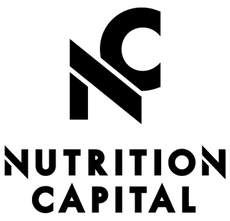In the pursuit of physical fitness and muscle growth, there's a fundamental principle that stands out among the rest - progressive overload. Whether you're a seasoned gym enthusiast or just beginning your fitness journey, understanding and implementing progressive overload can be the key to unlocking your full potential in the gym. In this blog post, we'll delve into what progressive overload is, why it's crucial for your fitness goals, and how you can incorporate it into your workout routine.
What is Progressive Overload?
Progressive overload is a foundational concept in strength training and bodybuilding. At its core, it involves gradually increasing the demands placed on your muscles over time to stimulate continuous growth and adaptation. This can be achieved by increasing the weight lifted, the number of repetitions, or the intensity of your exercises.
The Science Behind It:
When you engage in strength training, your muscles experience stress and micro-tears. In response to this, your body repairs and rebuilds the muscle tissue, making it stronger and more resilient. To keep this process going and to see ongoing gains, you need to challenge your muscles progressively. If you keep lifting the same amount of weight for the same number of repetitions, your body will adapt, but the growth will plateau. Progressive overload ensures that your muscles are constantly pushed beyond their comfort zone, fostering continual improvement.
Methods of Progressive Overload:
-
Increasing Resistance: The most straightforward method is to gradually lift heavier weights. This can be achieved by adding more weight to the barbell, dumbbells, or resistance machines. Aim for a weight that challenges you but allows you to maintain proper form.
-
Adding Repetitions or Sets: Another way to progressively overload is by increasing the number of repetitions or sets for a particular exercise. If you've been doing three sets of ten repetitions, try moving to four sets or increasing the reps to 12-15.
-
Reducing Rest Time: Decreasing the rest time between sets can intensify your workout, making it more challenging for your muscles. This helps to increase the overall workload and stimulates greater muscle engagement.
-
Varying Tempo: Changing the tempo of your lifts can also contribute to progressive overload. Slowing down the eccentric (lowering) phase of the lift or pausing at the midpoint adds a different dimension to the exercise, increasing the time under tension and promoting muscle growth.
Benefits of Progressive Overload:
-
Muscle Hypertrophy: The primary goal for many individuals in the gym is muscle growth, and progressive overload is a key driver of hypertrophy. It ensures that your muscles are continually adapting to new challenges, promoting size and strength gains.
-
Increased Strength: As you progressively overload your muscles, you'll notice an increase in strength. This not only enhances your performance in the gym but also in daily activities, improving overall functionality.
-
Prevention of Plateaus: One of the major advantages of progressive overload is its ability to prevent plateaus. By consistently challenging your muscles, you avoid reaching a point where your gains stagnate.
Incorporating progressive overload into your workout routine is a game-changer for anyone striving for continuous improvement in the gym. It's not about pushing yourself to the limit every session but rather about making gradual, sustainable increases to keep your muscles adapting and growing. Embrace the principle of progressive overload, and watch as your strength, endurance, and physique reach new heights. Remember, the journey to fitness is a marathon, not a sprint, and progressive overload is your trusted companion on this exhilarating path to success.

